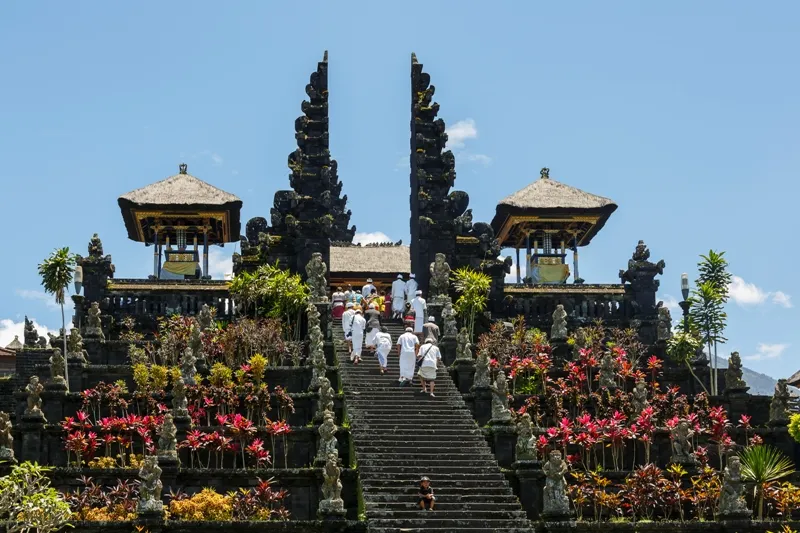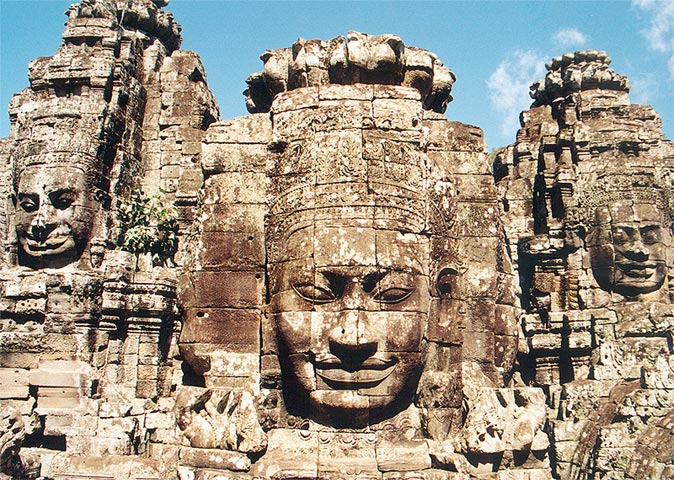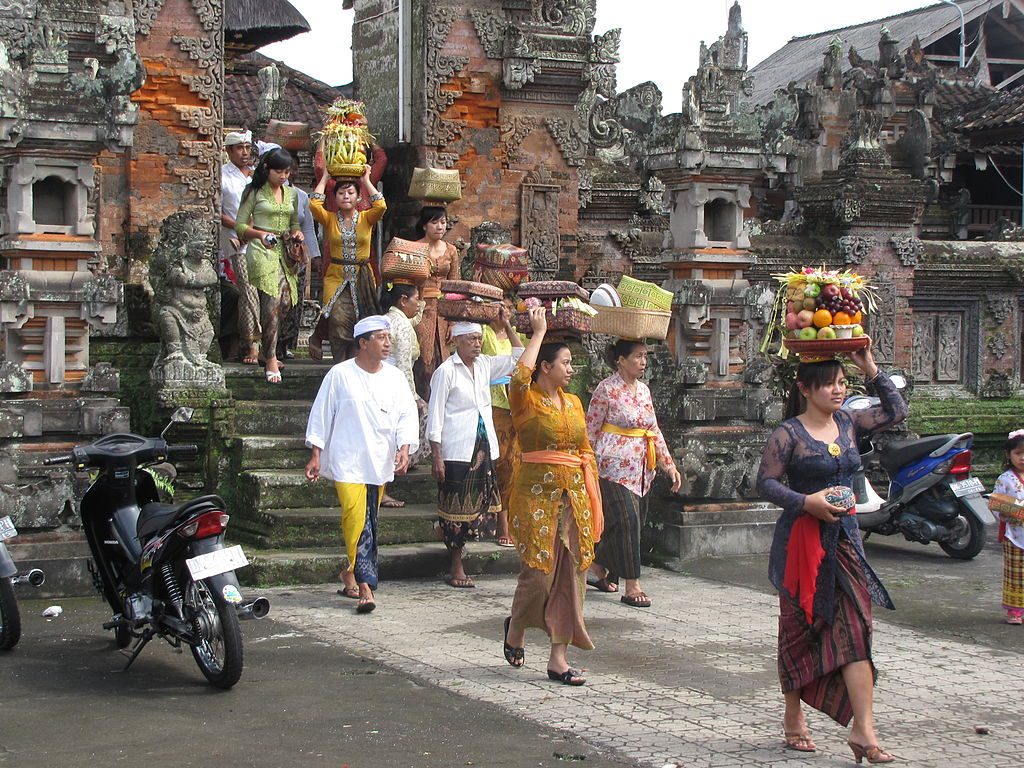
The Government of India’s ‘Act East policy’ aims at improving economic and political relations with the Southeast Asian region which has had close contacts with India for centuries and is linked culturally and geographically with it. India has been able to make inroads in trade and investments with members of the ASEAN by signing a Free Trade Agreement in 2009 which will aims at increasing business between the two and renew the partnership and contact with member countries with similar culture, artistic tradition, family values and customs.
In Cambodia, Thailand and Indonesia or Burma today, many symbolic remnants of India’s influence are clearly visible in their art, culture and civilisation. Through the centuries, India has been a source of inspiration for art and architecture in countries belonging to the present day ASEAN. The eleven countries of ASEAN are Myanmar, Thailand, Singapore, Malaysia, Indonesia, Vietnam, Cambodia, Laos, Brunei, the Philippines and recently added Timor Leste.
Temples of Angkor Wat, Pagan, Borobudur and Prambanan bear evidence to the deep penetration of Indian art and architectural forms in these famous Southeast Asian monuments.
Some of these monuments surpass the grandeur of Indian temples from the same period because of their scale, extensive stone bas relief carvings and expanse. Thanks to the contact with Indian civilisation, the Southeast Asia also created many literary works based on the Ramayana but with something distinctively their own being discernable in them.
 Face-towers depicting Bodhisattva Avalokiteshvara, Bayon-temple in Angkor, Cambodia
Face-towers depicting Bodhisattva Avalokiteshvara, Bayon-temple in Angkor, Cambodia
It must be said that Southeast Asia did not accept all foreign influences in an indiscriminate manner. Two notably important external influences came from China and India, but Southeast Asia accepted only those influences and practices that were suitable to their local cultures. Almost every country accepted Ramayana because it is easy to retell, understand, modify and apply to contemporary culture.
Folklore singers and artistes played a very important role in popularising and modifying Indian literary works in Southeast Asia and it was the most popular and effective way of propagating Indian culture. Through retelling of the stories from generation to generation, the great epics of Ramayana and Mahabharata could be edited and retold to attract bigger and bigger audiences. The artistes who popularised these were called ‘dalangs’ and contributed to the process of adaptation of these epic works originating outside their country by adding or changing them to make them more contextual and localised. This was the beginning of the formation of new texts like Seri Rama ( Malaysian adaptation of Ramayana) and RamKer ( Ramayana Khmer) in Cambodia. These are regarded as some of the highest literary works of Southeast Asia.
Similarly sculptors and artists copied and combined original Indian motifs with local artistic motifs to arrive at something distinctively Southeast Asian and produced stylised masterpieces of their own. Modelled after Gupta period icons, the Cambodian ( Khmer) sculpture of 8
th to 13
th centuries are very different in appearance and form yet they are beautiful creations representing stylised figures of gods, goddesses, Buddha, Apsaras and demons with Southeast Asian features.
India’s civilisation and culture spread in many parts of the world through trade but struck firm roots in Southeast Asia including in dance forms.
Yet India’s cultural conquests were peaceful and without forced conversions. There was no evidence of violence, colonisation and subjugation and there was no extensive migration from India to the countries of Southeast Asia. The Indians who went there did not go to rule nor had any interest in controlling from afar.
Southeast Asia was particularly attractive to Indian mercantile class and they named the faraway lands Swarnabhumi or land of gold, Tokola or land of cardamoms or Narikeldeep , land of coconuts. They followed two routes—one through land via Bengal, Assam, Manipur and Burma to reach different parts of Southeast Asia. The other route was the maritime route from Coromandel coast or the coast of Bay of Bengal to Cape Comorin and via Malacca strait to reach the Malay Peninsula.
India during Gupta period was a land of riches and people possessed great skills at weaving textiles, crafting gold jewellery, metal, sculpture and beautiful objects. There was much demand for Indian goods and trade between India and Southeast Asia which was seen as a land of spices and rice growing fertile lands, flourished. Funan in the Mekong Delta in Vietnam was the first trading post of Indian traders. Traders took residence there and from there spread to other countries of the region.
https://twitter.com/orfonline/status/882196338561044481
Hindu priests and Buddhist monks accompanied mercantile class and assumed a leading role in spreading the message of Indian thought and culture to the entire Southeast Asian region. Since they had no political ambitions and were living in hermitages and ashrams, the local people welcomed them.
Thus merchants, monks and Hindu Brahmin priests travelled to faraway kingdoms like Cambodia and Indonesia in large numbers and India’s culture, religion and civilisation spread to different parts of Southeast Asia. The kings of the region wore Indian made silk and brocade textiles during ceremonious occasions and donned jewels imported from India. Printed and woven textiles were eagerly sought after by the common people.
Indian religion, political thought, literature, mythology, artistic motifs and style, were absorbed deeply into local culture as greater interaction with Indians who settled in the courts of South East Asia took place. Buddhism came to Southeast Asia from India in 3
rd century BCE when Buddhist monks were sent by king Ashok.
In medieval times, from sixth to fourteenth century, there existed a great maritime empire based in the Indonesian islands of Java and Sumatra. Many Indian artisans came to work temporarily in the courts and were from Kalinga (modern day Orissa).They helped in building great temples and monuments. Many of the motifs on the walls of Borobudur and Angkor Wats resemble carvings of Konarak and other medieval temples of eastern India.
Brahmins also played an important role in the Siamese court as experts in Astrology and in conducting ceremonies. They were not only experts in performing religious rites but were also knowledgeable in political affairs, art and architecture. They were invited by rulers to serve as advisors, administrators and priests. They were experts in Sanskrit.
Sanskrit scripts are the first form of writing known to have reached Southeast Asia. Similar alphabets were adopted for local languages as well. The alphabets used today for Burmese, Thai, Laos and Cambodia derive originally from Indian prototype. A large number of ancient inscriptions which have been discovered are in Sanskrit.
Sanskrit terminology was used in all legal aspects of court procedures and only the factual aspects were described in vernacular. The use of Indian framework of code of law was mentioned by these inscription. Codes of law and public administration especially the concept of “God King” was adopted by many kings of Southeast Asia. They considered themselves to be incarnation or a descendant of one of the Hindu deities. Later when Buddhism came, this view was modified. The kings of Cambodia, Jayavarman VII (the founder of Angkor) and his successors were addressed by the people as king of the mountain and they built their palaces and temples on hill peaks ( Bayon temples).
Traders were also accompanied by Shudras (the lowest caste according to the Hindu caste hierarchy) who migrated in search of a better life from India and many settled in Bali. The caste system was modified when adopted by Southeast Asians as they had a class system of their own. They also did not adopt the Manusmriti which relegates women to an inferior place. The Indonesians still have matriarchal society in Sumatra (Minangkabau) where women are head of the family and inheritance is through the daughters’ lineage.
Finally, the decline of India’s influence in Southeast Asia began from around 13th century when conversions to Islam took place in many major countries like Malaysia and Indonesia. But within Indonesia, Bali practices Hinduism even today.
The rise of India’s influence had taken place when the Khmer kings spread it to other regions and decline began with the coming of Islam. But even though it was a long time ago that India’s influence on Southeast Asia’s culture and civilization more or less halted, the impact can be seen and felt even today on its customs, culture, architectural designs.
The syncretic culture of Southeast Asia is evident in Buddhism being practiced in Hindu temples in Cambodia, Muslim wedding rituals and dress in Malaysia which are based on Hindu rituals and attire, Garuda –the vehicle of Hindu God Vishnu, is the name of Indonesian Airlines, and Naga and Kuber which are prevalent in both Hindu and Buddhist cultures can be seen carved in many places. A Mahabharata Monument depicting Krishna and Arjun riding a chariot pulled by eleven horses is placed prominently in a park in central Jakarta. Southeast Asia absorbed and retained its past Indian influence in a very distinctive manner over the centuries and today it has melded into the Southeast Asian culture.
 A Balinese Hindu temple offering
A Balinese Hindu temple offering
In Indonesia shadow play involving leather puppets with moveable arms and legs on a screen narrating scenes from Ramayana is very popular even today. It is also a popular art form in Orissa. There was reverse exchange of ideas and artistic techniques in the last century when Rabindranath Tagore travelled to Southeast Asia and brought the art of Batik from Indonesia to India and taught it to the students in Santiniketan.
The influence of India can also be felt in the food and flavours of South East Asia. There are many spices in common between Indian and Southeast Asian foods. Nearly all the people of Southeast Asian region eat rice and curry like the people of Eastern India with many common ingredients. Indian herbal medicines also reached Southeast Asia from ancient times and are used even today in many countries. Closer links with the Southeast Asian region is thus a natural outcome for India and its ‘Act East policy’.
The views expressed above belong to the author(s). ORF research and analyses now available on Telegram! Click here to access our curated content — blogs, longforms and interviews.



 The Government of India’s ‘Act East policy’ aims at improving economic and political relations with the Southeast Asian region which has had close contacts with India for centuries and is linked culturally and geographically with it. India has been able to make inroads in trade and investments with members of the ASEAN by signing a Free Trade Agreement in 2009 which will aims at increasing business between the two and renew the partnership and contact with member countries with similar culture, artistic tradition, family values and customs.
In Cambodia, Thailand and Indonesia or Burma today, many symbolic remnants of India’s influence are clearly visible in their art, culture and civilisation. Through the centuries, India has been a source of inspiration for art and architecture in countries belonging to the present day ASEAN. The eleven countries of ASEAN are Myanmar, Thailand, Singapore, Malaysia, Indonesia, Vietnam, Cambodia, Laos, Brunei, the Philippines and recently added Timor Leste.
The Government of India’s ‘Act East policy’ aims at improving economic and political relations with the Southeast Asian region which has had close contacts with India for centuries and is linked culturally and geographically with it. India has been able to make inroads in trade and investments with members of the ASEAN by signing a Free Trade Agreement in 2009 which will aims at increasing business between the two and renew the partnership and contact with member countries with similar culture, artistic tradition, family values and customs.
In Cambodia, Thailand and Indonesia or Burma today, many symbolic remnants of India’s influence are clearly visible in their art, culture and civilisation. Through the centuries, India has been a source of inspiration for art and architecture in countries belonging to the present day ASEAN. The eleven countries of ASEAN are Myanmar, Thailand, Singapore, Malaysia, Indonesia, Vietnam, Cambodia, Laos, Brunei, the Philippines and recently added Timor Leste.
 Face-towers depicting Bodhisattva Avalokiteshvara, Bayon-temple in Angkor, Cambodia
Face-towers depicting Bodhisattva Avalokiteshvara, Bayon-temple in Angkor, Cambodia A Balinese Hindu temple offering
A Balinese Hindu temple offering PREV
PREV


